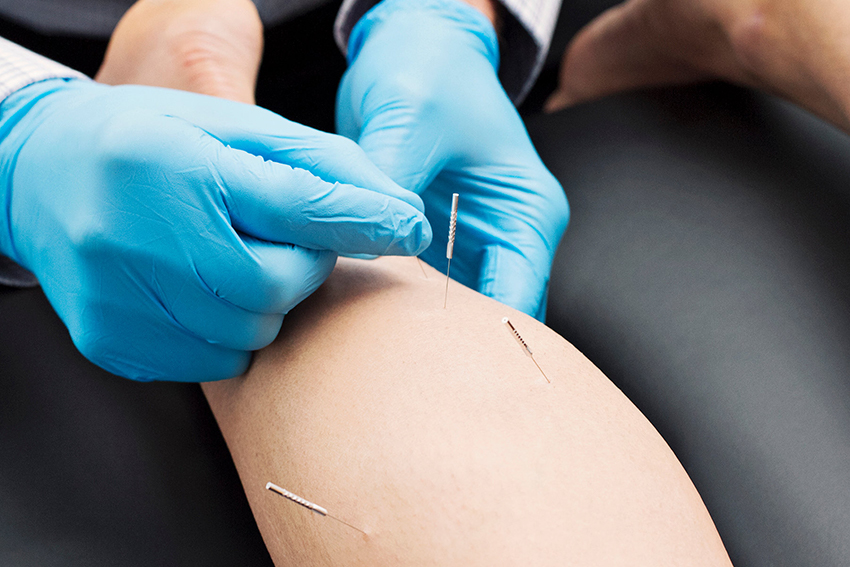Dry Needling
Dry needling (DN) is a form of physical therapy that can be used to help treat an array of musculoskeletal disorders and reduce pain. It works by stimulating the peripheral nervous system, helping to release tight muscles, as well as promoting healing of muscle tissue and fascia. The technique additionally has the ability to decrease chronic pain by reducing or blocking pain signals from reaching the brain. Furthermore, it can improve body movement and functioning, thereby allowing people to participate in activities with more ease. In summary, dry needling helps restore balance in the body’s tissue by releasing tight muscles and diminishing nociceptive input.

What Is Dry Needling?
Dry needling is a form of alternative therapy which is used to reduce pain and improve muscle movement. By inserting a thin, solid filament needle without medication into trigger points in the muscle, the process can help to deactivate them and bring about improvements.
This technique, also known as intramuscular manual therapy or trigger point dry needling, has been found to be helpful in treating various types of muscular pain and tension, such as those associated with sports injuries or chronic conditions. It works by stimulating the body’s natural healing mechanisms and can provide both immediate relief as well as long-term benefits. Additionally, it can be used in conjunction with other therapies such as massage for even greater effectiveness.
How Does Dry Needling Work?
As stated by the American Physical Therapy Association (APTA), “Dry needling is a skilled intervention that uses a thin filiform needle to penetrate the skin and stimulate underlying myofascial trigger points, muscular, and connective tissues for the management of neuromusculoskeletal pain and movement impairments.”
(DN) involves inserting thin needles into the body. These needles are inserted directly into myofascial trigger points, which are areas of tightness in the fascia. The insertion of the needle has an effect on your central nervous system and can help reduce muscle tension and spasms, improve circulation to the area, and stimulate healing. It is a safe and effective form of treatment for musculoskeletal pain.
Speak with a Dry Needling Expert
Call: (240) 247-0990
Frequently Asked Questions
What Is A Trigger Point?
How Can Dry Needling Help Me?
Dry needling can be used to treat a variety of musculoskeletal issues and increase blood flow, including: neck, back and shoulder pain; arm pain (tennis elbow, carpal tunnel, golfer’s elbow); headaches (migraines and tension-type); jaw and dental pain; buttock and leg pain (sciatica, hamstring strains, calf tightness/spasms).
Is Dry Needling Similar To Acupuncture?
Is Dry Needling Painful?
How Long Does it Usually Take to Notice Results?
Typically, patients notice a positive reaction within a few visits
How Does Dry Needling Fit Into The Overall Physical Therapy Treatment Plan?
Benefits of Dry Needling?
What to Expect From Your Visit
When visiting a dry needling practitioner, you can expect to receive treatments involving the insertion of fine acupuncture needles into your body. The needles are used to address trigger points and muscle tension. Your provider may also use cupping or electrical stimulation techniques in addition to the needling before releasing the treatment area.
During your visit, your provider will assess the areas of concern, explain what dry needling is and why it’s being used, answer any questions you have and then insert the needles in strategic locations based on that assessment. After a few minutes with some minor discomfort at times, additional relaxation therapies such as massage may be applied during or after the session for further relief from pain. You should plan on spending up to an hour for each appointment but length of time varies depending on individual needs.
You should discuss any questions and expectations with your provider before committing to treatment. Dry needling is a safe, non-invasive technique when performed by a trained practitioner and can help improve mobility, reduce pain, and relieve muscle tension. With regular treatments, you can expect to address the root cause of your discomfort and experience long-term relief from chronic issues or acute conditions.